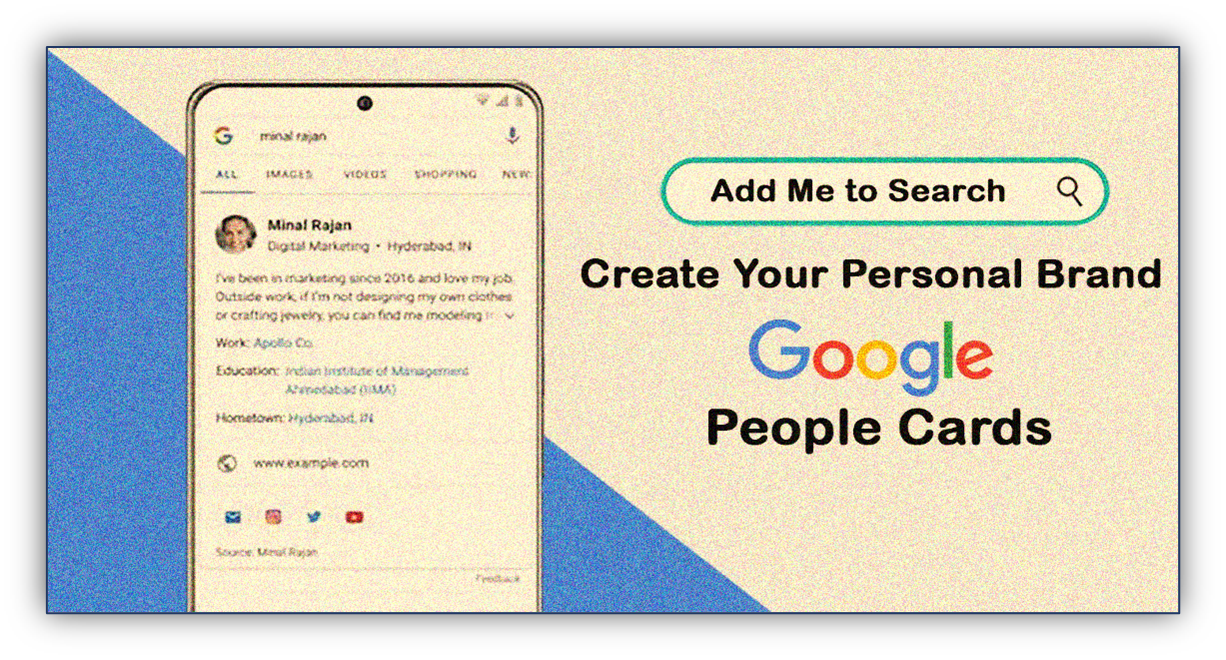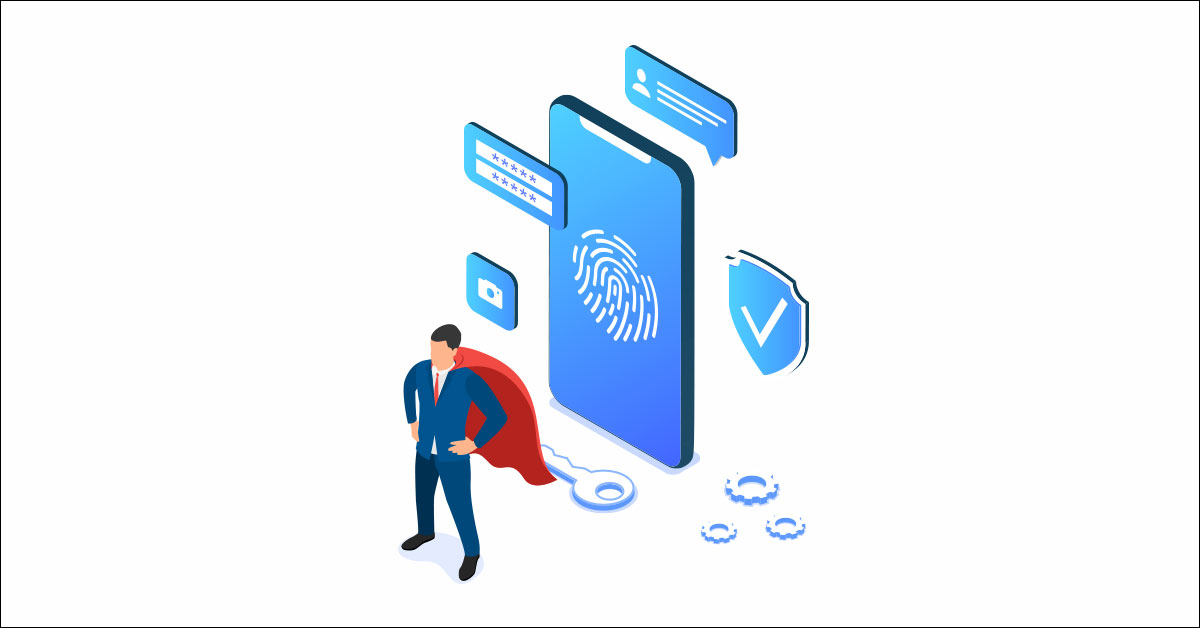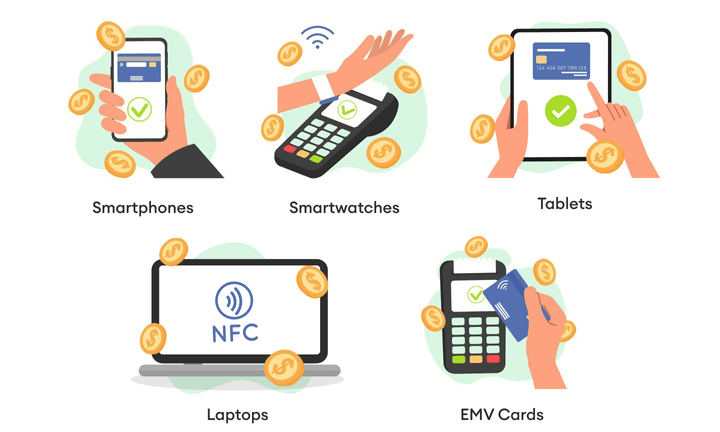- August 1, 2023
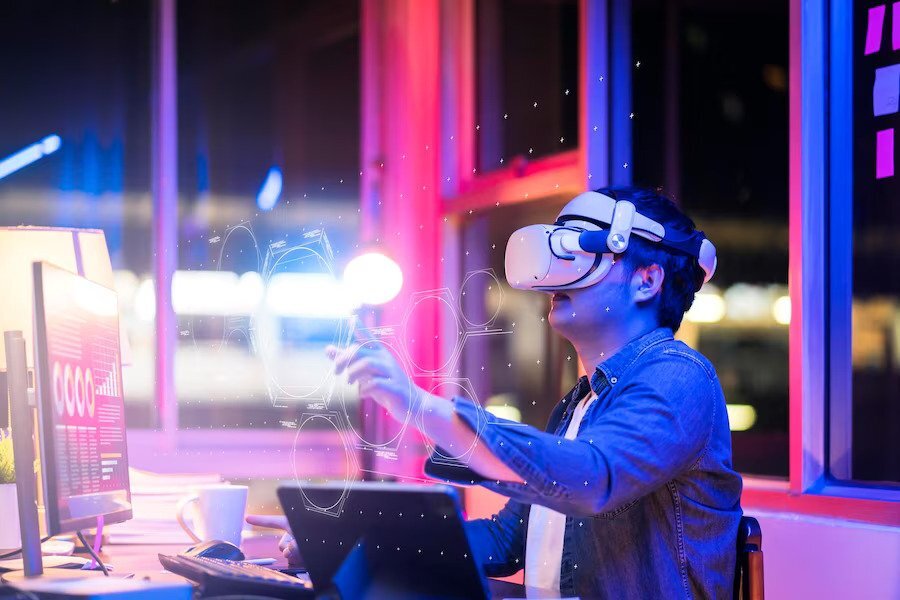
The Metaverse is a sizable virtual world where users can simulate real-world activities including buying and selling items, going to events, and so forth. Blockchain, web 3.0, AR/VR, and cryptocurrency are all used in the metaverse concept to bring the virtual world to life and change how people interact.
Everyone will be a part of this future at some point, whether they need a platform for their professional endeavors, their education, or both. Businesses that specialize in metaverse development are bringing the future into the present by developing an immersive experience for any product or service based on a digital twin in an existing industry.
We have compiled a list of the Top 5 Metaverse Development Companies to work with in 2023 who have created Metaverse platforms for a variety of industries because establishing a metaverse platform for a specific business may be essential. All of the businesses on this list offer their clients an immersive Metaverse experience, regardless of the industry.
Let’s Understand What Is “Metaverse Development”?
The metaverse is a single, 3D virtual environment where users can interact with one another, meet, have fun, and carry out challenging tasks using avatars.
The idea acquired a lot of popularity in the real world after Facebook acknowledged significant efforts in creating the metaverse at its mid-year earnings call in 2021.
Shortly after, it was rebranded Meta, and software titans like Epic Games, Microsoft, Niantic, and others made the decision to spend millions of dollars in the metaverse technology.
The metaverse does not have a single software platform that can be created utilizing the agile development model, unlike other virtual reality projects.
Instead, it’s a sophisticated digital cosmos with seven layers, as suggested by Jon Radoff, the blogger behind Building the Metaverse:
- Infrastructure: Examples of communication technologies include 5G, Wi-Fi, the cloud, and advanced components like GPUs.
- Decentralization examples include blockchain, AI, edge computing, and other democratization tools.
- Frameworks in spatial computing for 3D visualization and modeling.
- A range of creative tools, digital assets, and e-commerce companies make up the creator economy.
- Engagement is fueled by ads, social media, ratings, reviews, and other types of discovery.
- VR versions of popular digital applications for work, play, and shopping, among other things.
How Should I Pick A Metaverse Development Company?
Some important factors to take into account while selecting a metaverse development company include the following:
Experience
A corporation that has a lot of experience creating virtual worlds and metaverses is likely to have a solid grasp of the underlying technology and design ideas. Choose a business that has a track record of producing effective virtual experiences.
Expertise
Choosing a company with a team of professionals knowledgeable about the most recent technologies and trends is essential because the metaverse is a complicated and fast growing sector. Choose a business that employs a varied group of experts in fields like network architecture, artificial intelligence, and 3D design.
Creativity
A metaverse is a place for imagination and innovation, so it’s crucial to select a business with a proven track record of developing distinctive and compelling virtual experiences. Look for a company that has a collection of amazing metaverses and virtual worlds that demonstrate their creative prowess.
Partnerships
Selecting a business with experience working with clients and partners to build shared virtual experiences is crucial since the development of a successful metaverse demands partnership and cooperation amongst numerous parties. Choose a business that has a proven track record of working with other firms to create fruitful virtual initiatives.
Reputation
Selection of a corporation with a solid reputation among industry professionals and other stakeholders is crucial because the metaverse is a complex and quickly developing subject.
Top 5 Leading Metaverse Development Companies
The top five reliable Metaverse development companies for 2023–2024 are listed below.
Suffescom Solutions Inc.

Suffescom Solutions Inc. is a top leading metaverse development company and has developed technologies based on the Metaverse, blockchain, and Web 3.0 for more than 13 years. Suffescom is a popular company that offers NFT, Blockchain, Web 3.0, P2E network, and Metaverse-based platforms. Suffescom is headquartered in California, United States, and has expanded into numerous other nations.
Suffescom Solutions Inc. has provided Web 3.0-powered platforms to numerous businesses and is continuously conducting research and development to provide exact and well-established solutions for all business sectors and industries. Suffescom has demonstrated its abilities through various timely and well completed projects.
- Location: United States
- Company Strength: 750+
- Founded In: 2013
- Rate Card: $50 – $99 / hr
RisingMax Inc.
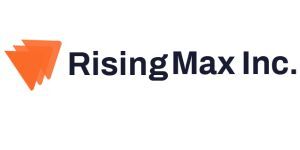
RisingMax, a US-based IT consulting company, develops apps for a range of platforms and uses. The company has increased its capabilities and included metaverse development to its list of offerings since 2018.
The company is renowned for its experiences and journeys in a variety of industries. RisingMax is a respected figure in the blockchain ecosystem thanks to its years of experience in the development industry.
- Location: United States
- Company Strength: 51-100
- Founded In: 2018
- Rate Card: $25 – $49 / hr
Decentraland

Decentraland is a public platform that was launched in 2017. It is a leader in the field of global digital asset development for metaverse games. In this virtual world, users can buy and sell real estate, wearable avatars, estates, and more.
Additionally, it has embraced cryptocurrencies to build a value-driven metaverse economy.
Anyone can sign up and play games to earn MANA, the website’s native coin. MANA is a currency that may be used in Decentraland to buy assets such as wearables, avatars, and real estate. You can create a wide range of interactive activities, social events, and content with limitless possibilities for revenue with the help of MANA.
- Location: United States
- Company Strength: 50-249
- Founded In: 2017
- Rate Card: $25 – $49 / hr
GuildFi

GuildFi creates a distinctive metaverse-based gaming ecosystem by fusing a Web3 infrastructure with NFT development services, an online community, and social media. By utilizing the metaverse blockchain to construct a metaverse ID that is integrated with an accomplishment and leveling system, GuildFi has accomplished this remarkable feat. Users receive two important advantages from this.
Associated with game achievement systems is the first advantage. The majority of platforms for online gaming feature an achievement system, but it is specific to that platform and account. With GuildFi, you can connect your accomplishments to a one, cross-platform identity that is underpinned by blockchain technology. Additionally, the platform offers a ranking system and engagement points. The most recent investment round for GuildFi ended with $6 million.
- Location: Thailand
- Company Strength: 11-50
- Founded In: 2021
- Rate Card: $25 – $49 / hr
Inoru

The creative team of Inoru, which consists of over 150 gifted people, is very adept at building the perfect metaverse platform for you. For your company, they offer a range of metaverse services, including the establishment of DeFi and DAOs, integrated metaverse services, game development, decentralized trading markets, social networking platforms, and metaverse e-commerce services.
In order to produce a metaverse project that is ready for the market, they also do market research, analyze needs, have the ability to collect and collectibles, have programs and functions, produce digital smart contracts, etc.
- Location: India
- Company Strength: 250 to 999
- Founded In: 2006
- Rate Card: <25$/ hr
Closing Remarks
Our future is in the metaverse. We are getting closer to a whole other reality as it is evolving quickly. By 2026, 25% of visitors could spend around 60 minutes per day in the metaverse. The cutting-edge technologies of today will become commonplace tomorrow. And now is your time to advance into the future as one of the first.
Metaverse construction is a complicated and technological procedure. Therefore, if you want to receive quality outcomes and save money, choosing industry pros is important.
FAQ
Why Should I Make a Metaverse Investment?
There are a few viable causes for you to think about funding Metaverse:
-
Possibility of Growth
Many individuals think that metaverse, a young and fast-developing technology, has the potential to play a big role in the future of the online world. If this occurs, the value of assets connected to the Metaverse may increase significantly.
-
Diversification
By integrating assets that are uncorrelated with conventional financial markets in your investment portfolio, investing in Metaverse may help you diversify your portfolio and maybe lower your risk.
-
Innovation
Investing in metaverse technologies could provide you the chance to be a part of this innovation and possibly profit from it. Metaverse technologies have the potential to disrupt and change a variety of sectors.
However, it’s crucial to bear in mind that investing in any asset carries risk, therefore before making any investment decisions, it’s imperative to conduct your own research and carefully weigh the potential risks and rewards.
How do I Begin My Journey in the Metaverse?
You can look around current virtual worlds and platforms that provide Metaverse experiences to get started in the Metaverse. You can register, personalize your avatar, and begin corresponding with other users. Additionally, there are possibilities to participate in virtual activities like games, concerts, and marketplaces as well as join communities, go to events, and find these opportunities.
Is it Safe and Secure for People to Use the Metaverse?
With content creation, well-structured codes, documentation, and intelligent decision-making, generative AI can greatly increase automation and can enhance departments within businesses like marketing, sales, and IT. These departments can then better plan campaigns and draw in customers with improved customer-centric products.
Can I Earn Money from Metaverse?
You can earn money from your actions in the Metaverse, yes. Users can purchase and sell virtual products, take part in virtual economies, and generate real-world cash through the production of streaming content and business endeavors in a variety of virtual worlds and platforms. The Metaverse provides chances for people and companies to make money and add value.
- July 31, 2023
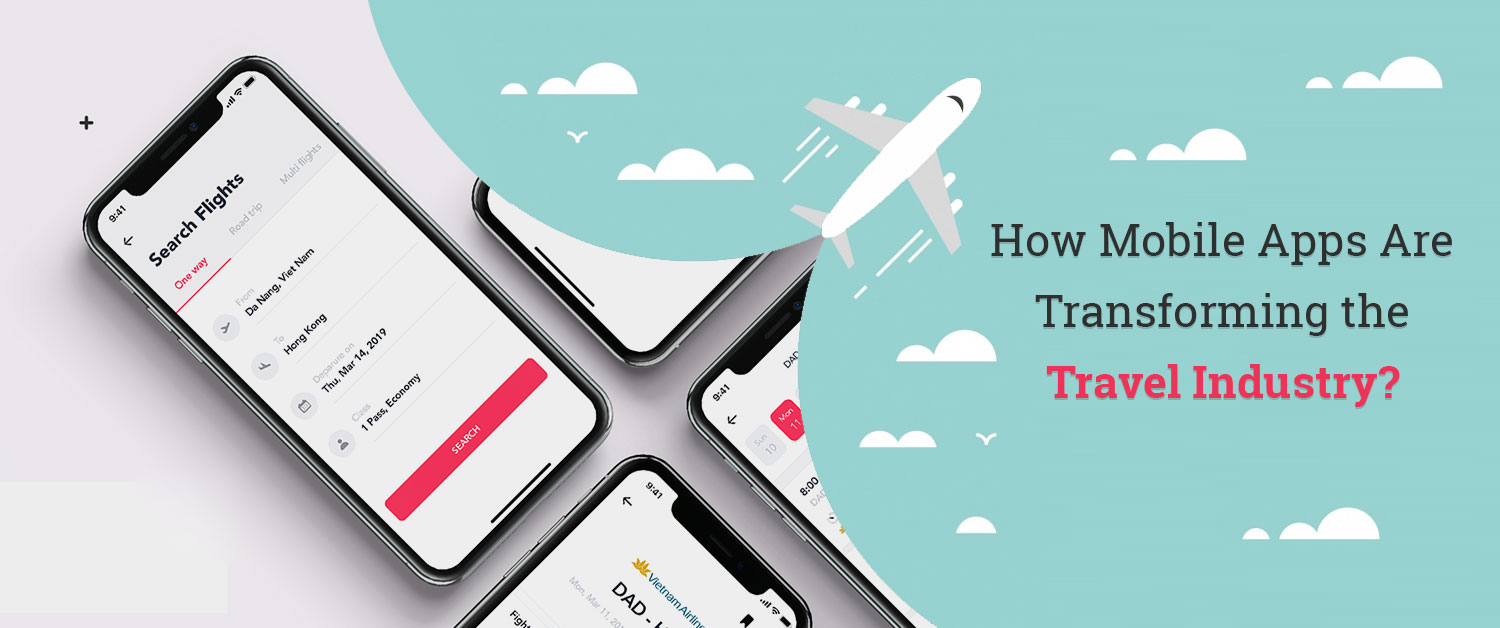
Dubai’s appeal as a vibrant and distinctive destination has attracted tourists from all over the world. Thanks to its stunning architecture, expensive shopping, spectacular desert panoramas, and pleasant weather all year round, Dubai has established itself as a major tourist destination. The city’s tourist sector has grown rapidly in recent years, and mobile applications have become essential tools for enhancing the vacation experience. In this in-depth essay, we examine the vital role mobile applications play in Dubai’s tourist sector and the several ways they help it succeed.
Dubai’s Tourism Industry
The tourist sector in Dubai is the economic engine of the city, generating considerable money and fostering growth on a whole. Dubai has established itself as a popular transit site for travelers going to many locations throughout the world because to its advantageous location as a major aviation hub. The city’s dedication to organizing world-class events, including Expo 2020, has also increased its notoriety and attraction to tourists from abroad.
The potential and expansion of Dubai’s tourist sector are nothing short of amazing. Millions of people visit the city every year in search of both leisure and professional possibilities. Mobile applications have taken the stage in response to the wide range of requirements of these tourists, revolutionizing how visitors engage with the city.
Rise of Mobile Apps in the Travel Industry
The widespread use of smartphones and the ensuing explosion in mobile app usage have caused a paradigm change in the tourism sector. Travelers today largely rely on smartphone applications to organize their journeys, make hotel reservations, find nearby attractions, and have immediate access to vital information.
Travelers may access a variety of knowledge at their fingertips thanks to mobile applications, which provide unmatched convenience. From flight bookings to hotel reservations, from navigation to language translation, mobile apps have become virtual travel assistants that accompany travelers throughout their journey.
Some notable benefits of mobile apps for travelers include:
Increasing Smartphone Usage and App Adoption
Now that inexpensive smartphones and mobile internet are widely available, almost every traveler has access to a potent tool that gives them access to a wide range of travel applications. Mobile applications are becoming a crucial component of the travel experience because to the rise in app usage that has resulted from this accessibility.
Benefits of Mobile Apps for Travelers
Mobile apps offer a plethora of benefits for travelers. They facilitate seamless itinerary planning, real-time updates on flight status, access to reviews and recommendations, and the ability to explore destinations through interactive maps. Furthermore, travelers can make cashless transactions and securely store important documents within these apps.
Examples of Successful Travel Apps Globally
Numerous travel applications have had enormous popularity all around the world, revolutionizing how people travel. The way that travelers discover and experience new locations has altered as a result of apps like TripAdvisor, Airbnb, and Google Maps, which have become household brands. Numerous travel applications have also appeared in Dubai to meet the various demands of travelers.
Current Scenario of Mobile Apps in Dubai’s Tourism
Dubai boasts a plethora of mobile apps tailored specifically for tourists. These apps cover various aspects of travel, from providing information about local attractions and events to offering exclusive deals on hotels and activities.
Overview of Existing Travel Apps in Dubai
Dubai’s app ecosystem is teeming with options for tourists. Many apps offer city guides, including essential information about top landmarks, restaurants, and cultural experiences. Apps like Visit Dubai and Dubai Tourism have consolidated various services and are official sources of information for visitors.
Popular Features and Functionalities Offered
The travel apps in Dubai incorporate a host of features designed to make the travel experience as smooth as possible. These features include interactive maps, personalized itineraries, language translation, offline access to crucial information, and even virtual tours of attractions.
Challenges and Opportunities for Improvement
While Dubai’s travel apps have come a long way in providing valuable services, challenges remain. Some apps may suffer from occasional glitches or outdated information, which can negatively impact the user experience. However, these challenges present opportunities for iOS app developers in Dubai to innovate and continually improve their offerings, ensuring a seamless and up-to-date experience for users exploring the dynamic and diverse city.
Enhancing User Experience through Mobile Apps
Mobile apps have become a cornerstone for enhancing the overall user experience of travelers. Through innovative features and seamless functionalities, these apps aim to make travel planning and exploration more enjoyable and effortless.
Easy Booking and Reservation Systems
With a few taps on their mobile devices, tourists can easily book flights, hotels, excursions, and activities. The booking procedure is rapid and hassle-free since secure payment channels and user-friendly interfaces are integrated.
Personalized Recommendations and Itineraries
To cater to individual preferences, many travel apps offer personalized recommendations based on user behavior and interests. These personalized itineraries help travelers make the most of their vacation by proposing locations, experiences, and activities that suit their tastes.
Augmented Reality (AR) and Virtual Reality (VR) Experiences
Some travel applications offer immersive experiences that enable users to digitally tour monuments, historical locations, and cultural hotspots by using AR and VR technology. These cutting-edge features enable tourists to get a preview of what they can expect during their trip, sparking excitement and anticipation.
Boosting Destination Marketing and Promotion
Mobile apps play a pivotal role in promoting Dubai’s attractions and fostering engagement with potential visitors. Through effective destination marketing strategies, these apps contribute significantly to attracting tourists from around the world.
Utilizing Mobile Apps for Showcasing Attractions
Mobile apps serve as powerful marketing tools, providing a platform to showcase Dubai’s iconic attractions and hidden gems. Stunning visuals, engaging content, and informative descriptions create a compelling narrative that entices travelers to explore the city.
Engaging Users through Social Media Integration
To extend their reach and foster a community of avid travelers, mobile apps often integrate social media features. Users can share their experiences, photos, and reviews, creating user-generated content that further promotes Dubai as a must-visit destination.
Leveraging Influencers and User-Generated Content
Collaborating with influencers and leveraging user-generated content have become instrumental in destination marketing. By partnering with influencers, travel apps can tap into their vast audience and enhance brand visibility. Additionally, user-generated content adds an authentic touch, resonating with potential visitors on a personal level.
Improving Efficiency for Travel Service Providers
Mobile apps not only benefit travelers but also play a crucial role in streamlining operations for travel service providers. From airlines to hotels and tour operators, these businesses can leverage apps to improve efficiency and customer satisfaction.
Streamlining Operations through App Integrations
Travel service providers can integrate their systems with mobile apps, optimizing processes like check-in, ticketing, and reservations. This seamless integration not only saves time for travelers but also enables service providers to manage their operations more efficiently.
Digital Ticketing and Paperless Solutions
Mobile apps have ushered in an era of digital ticketing, reducing the reliance on physical tickets and paper documents. Travelers can conveniently access electronic tickets and boarding passes, reducing the risk of misplacing essential documents.
Real-Time Customer Support and Feedback
Travel apps facilitate real-time communication between travelers and service providers. This direct line of communication allows for prompt assistance, resolving issues, and gathering valuable feedback for continuous improvement.
Impacts of COVID-19 on Mobile Apps in Tourism
The COVID-19 pandemic had an unprecedented impact on the travel industry, compelling it to adapt to new norms and safety measures. Mobile apps played a crucial role in navigating the challenges posed by the pandemic.
Shift towards Contactless Experiences and Digital Solutions
With heightened hygiene concerns, contactless experiences became a priority. Mobile apps enabled touch-free transactions, digital check-ins, and virtual tours to minimize physical contact during the pandemic.
Challenges Faced by the Industry during the Pandemic
The travel industry faced numerous challenges during the pandemic, including travel restrictions, reduced demand, and economic uncertainty. Mobile apps served as a lifeline for many businesses, helping them stay connected with their customer base.
Opportunities for Innovation and Recovery
Despite the challenges, the pandemic also presented opportunities for innovation. Travel apps adapted to the changing landscape, offering virtual events, online experiences, and exclusive deals to entice travelers when international travel was restricted.
Future Trends and Innovations in Mobile Apps for Dubai’s Tourism
The future of mobile apps in Dubai specially in tourism industry holds immense potential for growth and innovation. Mobile app developers are continually exploring new technologies and features to elevate the travel experience to unprecedented heights.
Integration of AI and Chatbots for Personalized Assistance
The travel industry’s customer service is about to undergo a change thanks to artificial intelligence (AI) and chatbots. AI-powered chatbots may deliver customized suggestions, respond to inquiries, and offer real-time support by analyzing user data and preferences. This makes travelling more convenient and pleasurable.
Embracing Blockchain Technology for Secure Transactions
The travel sector might benefit from using blockchain technology to increase transaction security and transparency. Travel apps may offer a safe and tamper-proof environment for travelers by adding blockchain-based payment mechanisms and data management.
Incorporating Sustainability Initiatives and Eco-Friendly Features
As the world becomes more environmentally conscious, travel apps are incorporating sustainability initiatives and eco-friendly features. These apps will help promote responsible travel, encourage eco-conscious choices, and contribute to preserving Dubai’s natural beauty and resources.
Conclusion
Mobile apps have become indispensable tools in Dubai’s thriving tourism industry. Travelers now discover cities and interact with them in whole new ways thanks to their capacity to improve user experiences, market destinations, and expedite business processes for service providers. Mobile applications will surely be crucial in determining the direction of Dubai’s tourism in the future through constant innovation and adaptability to changing conditions.
Collaboration between mobile app developers in Dubai and stakeholders becomes increasingly important as the city develops and adopts new technology. They can take Dubai’s tourist business to new heights and establish it as an unrivalled travel destination by collaborating to develop intuitive, immersive, and successful mobile apps.
- July 29, 2023
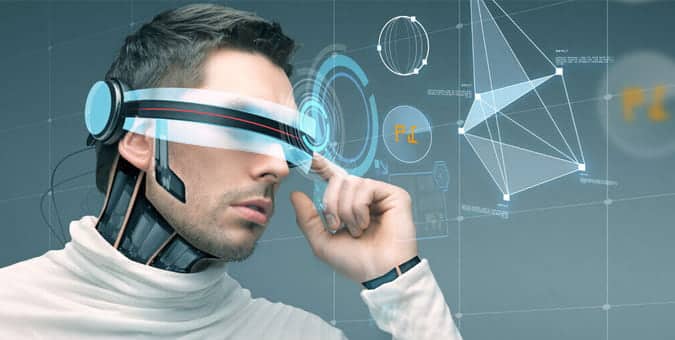
Exponential growth in technology has influenced both consumers and tech industry companies. Since the last decade, digital transformation has gained momentum that allows businesses to excel in their knowledge regarding using digital technologies. A report from a research firm. ‘Frost & Sullivan’s “Global State of AI, 2022” states that eighty-seven percent of businesses have employed cutting-edge technologies such as Artificial Intelligence, Virtual Reality, and Machine Learning to execute their business operations. Employing AI technology has helped the digital ecosystem to flourish, and organizations have improved their operational efficiency and maximized the work proficiency and productivity of their teams.
With growing advancements in AI technology, more businesses have begun investing in VR and AR technology. The article briefly provides an overview of Augmented Reality and its importance in different fields including Wearable Mobile App Development. Moreover, the content expounds on the advantages of augmented reality (AR) for consumers and businesses. The readers will gain additional knowledge concerning the evolution of wearable technology and how AR and VR get integrated into wearable devices.
VR and AR Technology: The Technology For The next generation
Augmented reality (AR) is a cutting-edge technology that places digital elements onto the real world. Having computer-generated information, the tool uses GPS, sensors that provide positioning, velocity, and timing information. Augmented Reality is an AI-engaging tool that helps create an immersive learning environment. AI has completely transformed our lifestyles and trends. For instance, consumers experience different types of virtual environments including video games virtual tours, and social and educational events. AI algorithms also boost the virtual shopping experience. Voice recognition software is integrated into virtual reality and augmented reality applications that break down an audio recording into individual sounds. Moreover, AI-based algorithms measure the prospect of different word choices and phrases in a language’s vocabulary.
Other industry-specific benefits of AR technology comprises motion tracking data. Consequently, advanced AI tools allow businesses to digitize different fields including improving customer service, real-time tracking, 3D modeling, e-commerce, healthcare, and education. The users employ the algorithm to look for patterns, colors, and similar features to identify the object. Additionally, the different components comprising GPS, accelerometers, and cameras allow app developers to place an image within real-world surroundings. AI researchers have developed 3D scenes from physical photos or used images taken by smartphone cameras. They have placed digital components on the images that offered an immersive experience to the viewers.
Recent statistics provided by the global Augmented Reality market relate that the value of the augmented reality market value will reach $136.55 billion by 2025. Consequently, more businesses are employing AR technology to take their businesses to the next level.
Virtual reality (VR)
Compared to augmented reality, virtual reality offers an immersive experience to the users. Using the headset and headphones, the technology takes the users into the virtual world. It helps them gain a three-dimensional experience. For instance, game engines, content management, and computer-generated video games keep users engrossed. Moreover, a virtual tour boosts their alluring experience. The VR technology takes users into a virtual environment. For instance, virtual tours comprising educational and training materials take place without physical interaction. The technology deeply engages them in the virtual world and elevates their immersion experience.
Let’s Read How augmented reality (AR), and virtual reality (VR) Has Influenced Different Fields
Nowadays, business mobile app development has built real-time apps comprising augmented and virtual reality. They offer a new level of engaging entertainment to the users. The app designers have transformed media and entertainment by creating immersive storytelling platforms, fascinating cinematic mechanisms, and VR installations. 3D Game engines and 3D animation software allow designers to streamline the game development process, from designing game assets to testing and debugging and providing immersive gaming experience to the users.
Innovative technologies in AR and VR revolutionized the healthcare system. Both VR and AR assist healthcare practitioners learn how to operate life-saving equipment, and virtually monitor healthcare units. VR technology is helpful for new surgeons to watch surgical procedures sitting at any place and just using the headset. Virtual Applications help in visualizing building projects.AR and VR designers build information models (BIM) that help them visualize their projects efficiently without viewing the building designs in real life.
AR and VR offer immersive opportunities for education and training. Integrating these applications has brought diversity to the world of education. Learning is no more dull and monotonous for students. Instead of viewing static images or watching descriptive videos, learners can gain knowledge through AR-powered glasses, 3D content, and software having advanced sensors and image processors
Augmented reality and virtual reality streamline business operations and improve employee engagement. Virtual reality helps in the recruitment process; the companies evaluate the behavior and skills of the candidates by generating VR and AR games
The next-generation tech companies have incorporated augmented reality and virtual applications to boost wearable technology. The devices are worn on the body including smartwatches, fitness trackers, and augmented reality glasses. Consumers can conveniently track their fitness and health data while business can monitor their daily business operations
Having high flexibility, cost-effectiveness, and a variety of other benefits, VR and AR digital apps are mostly preferred by companies today. Consequently, it has helped businesses get high search engine results, boost business sales and ROI.
Wearable Technology reinvented Through AR and VR
Wearable technology has grown popular among young people. Young adults use wearables including smartwatches, fitness trackers, and augmented reality glasses that are worn on the body. The wearables are connected to computers or smartphones. Android or IOS phones are integrated with mobile applications that help people track their health and fitness. Smartwatches have apps that help prepare the grocery list or create an organized shopping list. While fitness apps keep track of running and exercise routines, monitor the heart rate and sleeping patterns. Hence, innovative apps optimize workouts and maintain health and wellness.
Current Trends in AR and VR Wearable Mobile App Development
Fashion and Entertainment Apps Innovation redefine your style
The fashion apps connect designers with consumers, facilitating them to browse their products from retailers or their online stores. Discovery platforms of the companies have catalogs that are displayed on the app. For instance, Shop Style, an inventive fashion app allow users to search their upcoming products and save the images of their favorite brands. Consequently, the app help companies to directly sell their product to their prospective consumers. In addition, the app motivates more customers to visit the sites to either search for the product or make purchases. The entertainment app provides updated brand news, stunning product images, and organizing catwalks. Thus, the fashion app provides a personalized shopping experience to the users and helps grow the fashion business.
AR and VR Education and Training apps improve the learning process
Education apps having augmented reality apps features provide immersive learning experiences to students. 2D/3D/4D modeling and discovery-based learning allow instructors to create interactive lectures that offer a deeper understanding of complex concepts related to Math, science, and language arts by blending both physical and virtual spaces. The app helps create simulated tutorials that illustrate complex concepts interactively. Young learners can improve their exploration skills by using an interactive app that changes coloring pages to animated sheets. Moreover, VR software allows students to organize live talks with teachers and group members. Young learners can improve their social and academic knowledge. The instructors employing AR and VR tools can generate creative projects comprising worksheets, quizzes, bubble sheets, and exam sheets.
Wearable technology has revolutionized the healthcare system
Using AR and VR tools and devices, the health care professionals create a virtual surgical theatre. They virtually observe the surgical procedures of any series of surgery to be taken place. The surgeons scan 3D models that help them to study the patient’s anatomy more closely. Using different technical procedures such as CT scans helps surgeons to monitor the problem area carefully and proactively manage the complex anatomy procedure. Telesurgery has also become common. It is performed by advanced robotics that handles physical surgeries. Using wearable devices, health professionals control the robots to perform the surgery from anywhere.
Another remarkable VR application case is SyncThink. It combines a virtual reality headset and cloud-based software that helps track the eye movements of people.
Using the 2D screen, the users can have a virtual experience of analyzing the different aspects of designing and other parts of the building. Consequently, virtual technology provides high-quality visualization of the structure, design, and planning of the place.
AR and VR provide immersive game experiences to gamers
Modern gaming apps available on Android and IOS phones are thrilling and mysterious for the users. Android app development services have developed interactive and brain-stimulation games comprising puzzles, thought-provoking games complex strategy games, and problem-solving games. As the users get deeply involved, it boosts their cognitive skills, memorization, and analysis. Consequently, gaming artists and developers have created interesting virtual games including Stingray 3D game engine, Unity, Unreal Engine, and Cry Engine. The mesmerizing games have fantasy characters and animation fully-engross the users and gain 3D experience.
E-commerce apps allow users to interact with the brand digitally
AR and VR tools provide the e-commerce experience to the users by providing brand information, and personalized shopping experience. For instance, AR help customers visualize how products would look in their space such as furniture, clothing, or other accessories. The users check out virtually the products including makeup jewellery to watches before purchasing them. Sephora Virtual Artist, an AR app allows customers to virtually examine different makeup products. Another significant VR tool for e-commerce businesses is Walmart VR. It is a VR training program that improves customer service, and inventory management skills of employees. Consequently, using AR and VR devices provide an interactive and mesmerizing experience to customers.
Immersive technologies assist companies in managing business operations
AR/VR software helps developers in testing the products during the manufacturing phase. The designers build a virtual product model to let the companies know how it will work in the real world. Companies also use virtual applications to identify potential problems with a product before its launch. AR and VR offer exceptional marketing and advertising opportunities to businesses. For instance, app designers create marketing strategies and campaigns that promote a brand in an immersive way. It includes virtually marketing the brand to online customers through product demonstrations. Another interactive experience is organizing virtual event promotions.
Companies require AR and VR to produce a virtual environment that assists customer service teams to promptly respond to customers in real-time, irrespective of time or location. Moreover, virtual apps help businesses conduct soft skills training programs for employees. Promoting company culture and values, immersive technologies have helped the business to boost employee engagement in virtual settings. Employees using AR and VR can smoothly engage with remote or hybrid work cultures, gain more learning opportunities and hone their skills.
Analyzing the Challenges of Wearable Mobile Apps
- The wearable device’s battery life is limited
As compared to other devices, wearable devices are generally small and delicate. Users who frequently use wearables to perform their personal and professional tasks complain of battery issues. Whether it is a smartwatch, Apple Watch, or e-textiles, their battery gets drained. Therefore, it is significant for wearable developers to design a powerful and high-performing app with a long-term battery.
- The miniature User interface of the device
Boosting user engagement towards the app requires app developers to create wearable apps that appear to be attractive and friendly for wearable users. Some devices have slightly small screens than smartphones that cause inconvenience to the users in reading the content. The app designers are recommended to create a minimalistic and smooth UX/UI interface. The device should demonstrate useful information that is related to the users. Moreover, the color scheme of the app should be light which makes the content readable and visible to the readers. The app should deliver notifications and messages that are significant and focused for a user.
- Some viewers complain that wearable apps are not compatible with multiple platforms
To avoid inconveniences in-app functions, users look for wearable apps that run seamlessly on different devices. For instance, some vendors build wearables that only run well on Android and do not function on IOS. Therefore, users can use tethered devices such as Bluetooth connections that allow the wearable app to run on multiple platforms.
Recapitulate:
In a modern digital era, wearable technology is continuously changing. Developers have brought diversification in the apps to provide a smooth and seamless experience to the users. According to recent statistics, wearable users will surpass one billion by 2023. Consequently, it has become the most popular wearable technology in the tech industry. Modern devices and ultra-functional wearable apps have benefitted customers in a variety of fields. From tracking fitness activity to boosting gaming experiences, and monitoring biometric data, wearable devices have benefitted both individuals and companies at large. Wearable apps comprising AR and VR tools have helped health professionals to get engaged with proactive healthcare activities. For instance, surgeons can have a thorough examination of the patient and perform complex surgeries. Telesurgery, rehabilitation clinics, and fitness trackers are managed by AR and VR health professionals. The tools have helped companies to improve their business efficiency and help them promote their brand on social media sites. The improved designs of modern wearables attract people and prompt them to use wearable technology. Thus, trendy, fashionable, and functional wearable devices have to improve the lifestyle, maintain health care and fitness and boost the productivity of the app.
- July 29, 2023

In the modern era of the technological scene, the future of computing platforms and enterprise applications guarantees a dynamic and groundbreaking excursion. With advanced technology, for example, artificial intelligence, cloud computing, and the Internet of Things turning out to be progressively pervasive, organizations are ready to encounter a significant change in the way they work and develop. This investigation opens ways to a universe of improved effectiveness, constant experiences, and consistent joining across frameworks. As figuring stages keep on developing, the potential for further developed versatility, security, and customization in big business applications becomes boundless. Overall, we dive into the astonishing opportunities and arising trends that are reshaping the manner in which organization approach technology, empowering them to adopt, develop, and flourish in this digital period.
The future of computing platforms will be shaped by innovative technologies like AI and quantum computing, with web crawlers playing a pivotal role in gathering and organizing vast amounts of data.
The Evolution of Computing Platforms
In traditional computing physical data centers are facilitated to store digital assets and run networked systems for day-to-day activities. Access to data, software or storage by end clients is restricted to devices or office networks connected inside. The server is introduced nearby and offers types of services to those who have access to hardware with an overview of stored data and applications.
Advancements in Computing Technologies
The latest computing technologies has helped in new digital era of possibilities and innovation. Technologies includes Artificial intelligence and machine learning, edge computing and quantum computing.
Artificial Intelligence and Machine Learning
Artificial intelligence is a broad field, which refers to the utilization of innovations to construct machines and PCs that can imitate mental capabilities related to human knowledge, for example, being able to see, understand, and respond to spoken or written language, analyze data, make recommendations, and use of AI tools in pre-hire recruitment is changing the landscapes with these advances. Whereas Machine learning is a subset of artificial intelligence that naturally empowers a machine or framework to gain and improve as a matter of fact. Instead of explicit programming, machine learning uses algorithms to analyze large amounts of data, learn from the insights, and then make informed decisions.
Edge Computing
Edge computing is a dispersed processing structure that carries endeavor applications nearer to information sources like IoT gadgets or neighborhood edge servers. This vicinity to information at its source can be areas of strength for conveying benefits, including quicker bits of knowledge, further developed reaction times and better data transmission accessibility.
Quantum Computing
Quantum computing utilizes strong PCs to take care of issues at the nuclear and subatomic levels. Dissimilar to classic PCs, which perform computations and store information in parallel code, quantum PCs use quantum bits, also called qubits. This permits quantum PCs to do the math and tackle issues considerably more rapidly than already conceivable.
The Role of Enterprise Applications
Enterprise applications plays a critical part in modern, filling in as the foundation of tasks and working with productive and smoothed-out work processes. These applications envelop an extensive variety of programming arrangements intended to meet the particular necessities of associations, including Client Relationship The board (CRM), Venture Asset Arranging (ERP), HR The executives (HRM), and Inventory network The board (SCM) frameworks, among others. The essential job of big business applications is to coordinate and concentrate information, empowering ongoing admittance to basic data across divisions.
Definition and Importance of Enterprise Applications
An enterprise application (EA) is a large software system platform that is frequently developed to operate in a corporate setting, such as a business or government. Enterprise application software integrates computer systems that are integrated to run all of a company’s operating phases. They enable collaborative workflows and simplify challenging large-scale projects.
Current Trends in Enterprise Applications
Cloud based solution
Cloud-based solutions use cloud computing infrastructure to host and deliver software or services via the internet. With the help of these solutions, businesses may access and use computing, data storage, and application resources without having to invest in on-site hardware or infrastructure.
Integration of Big Data and Analytics
The convergence of big data and analytics has revolutionized businesses empowering them to extract valuable insight and made well informed data-driven decisions. Big data is a term encompassing massive volumes of both structured and unstructured data that originates from diverse sources such as social media, sensors and transactional records.
Mobility and Internet of Things (IoT)
In the realm of digital advancement the two ground breaking technologies that reshaping our interactions with the digital world are the Internet of Things and mobility. Mobility is actually the use of portable electronics like smartphones and tablets to conduct jobs and access information from any location at any time. IoT on the other hand enables communication and data exchange between numerous devices and objects by connecting them to the internet. Wearable technology, smart home appliances, industrial gear, and smart cities are all included in this network of networked gadgets.
The Future of Computing Platforms and Enterprise Applications
Modern technology adoption benefits businesses in two ways: it improves performance and increases operational efficiency. Repetitive activities are streamlined using automation and cutting-edge software, boosting productivity and reducing human error.
Intelligent Automation and Predictive Analytics
Intelligent automation handles routine chores by combining automation and artificial intelligence, freeing up humans to concentrate on more critical responsibilities. This technology boosts accuracy and efficiency, resulting in quicker and error-free processes. Predictive analytics, on the other hand, uses both historical and current data to predict future patterns and results. Businesses can forecast customer behavior, market volatility, and future risks by analyzing patterns and trends.
Advanced Security Solutions
Modern technologies like artificial intelligence, machine learning and behavioral analysis these are incorporated into advance security solutions to quickly identify and address risks. They provide multiple layers of protection against unauthorized access and data breaches such as encryption access controls and intrusion detection systems.
Seamless User Experience and Personalization
Customers can interact with products, services, or applications easily and without difficulty due to a smooth user experience. This requires simple navigation, quick page loads, and platform-agnostic design. Personalization, on the other hand, adjusts the user experience to account for unique preferences, needs, and behaviors.
Challenges and Considerations
Challenges in the context of digital transformation and technology adoption could include issues with data security and privacy, the price of adopting new technology, and the requirement for personnel training and upskilling. Critical factors also include ensuring smooth connection with current systems and managing possible objections to change. Other crucial considerations include keeping a customer-centric perspective and managing innovation with legal requirements.
Data Privacy and Security Concerns
Protecting sensitive data and information has become a major concern as a result of the growing volume of data being generated, stored and exchanged. Businesses are at risk of data breaches, cyberattacks, and unauthorized access which could result in losses in revenue and harm to their brands. Organizations managing customer data are now required by law to comply with to data protection laws like GDPR and CCPA. Strong security measures such as encryption, access controls, and frequent security audits are necessary to address these worries. The maintenance of data privacy and sustaining consumer trust also need training personnel and applying best practices to protect data.
Accessibility and Inclusivity
Promoting equality and reaching a diverse audience depend on making sure that all people, regardless of disabilities or impairments, can use products, services, and digital content. This includes designing user interfaces that are simple to use, giving alternate content formats, and providing assistive technology for those who have hearing, vision, or movement disabilities. Beyond accessibility, emphasizing inclusivity also means attempting to represent other viewpoints and cultural backgrounds in marketing, branding, and product development.
Conclusion
All participants forecast the model’s growth as cloud computing continues to make its way into the enterprise sphere. As things stand, cloud computing technology is necessary for practically every key growth, including blockchain, AI, and IoT. Cloud computing is great for more reasons than merely efficiency of computation, networking speed, or storage capacity. These are only operational measurements that, with time, better technologies will gradually change and replace.
- July 28, 2023

Wearable technology, which has also revolutionised how we interact with our gadgets and our environment, has ushered in a new age in the development of mobile apps. These wearable gadgets, which include virtual reality glasses, fitness bands, and smartwatches, have opened up a wide range of prospects for app developers. As they seamlessly fit into consumers’ daily lives, these devices offer an incredible chance to create personalised and context-aware applications.
Developers have been forced to change their tactics in response to this trend, optimizing app design for smaller screens and rethinking user experiences to explicitly address wearables. Apps will become more intuitive, accessible, and deeply ingrained in our daily lives as a result of wearable technology’s influence on mobile app development.
Definition of Wearable Technology
Wearable technology, also referred to as “wearables,” is a class of electronic gadgets that can be tattooed on the user’s skin, worn as accessories, or even implanted inside their bodies. The devices are chip-powered, hands-free tech tools with the extra advantage of being able to send and receive data over the Internet.
Overview of Mobile App Development
Explanation of Wearable Devices
The term “wearable devices” describes a group of electronic gadgets that may be worn on the body or fastened to clothing, frequently utilizing cutting-edge technology and sensors to fulfil a variety of functions. Wearable technology represents cutting-edge technology, helping to create a more connected and individualized digital lifestyle with its expanding capabilities and uses in fields like productivity, sports, and healthcare.
Examples of popular wearable devices in the market
- Apple Watch
- Apple air pods
- Fitbit Versa smartwatch
- Samsung Galaxy
- Oculus Quest headset
- Oura Ring
- Ray-Ban Stories Wayfarer Smart Glasses
Growth and Adoption of wearable technology
Wearable technology has entered the mainstream market and is becoming increasingly popular with customers all over the world as technology develops and is made more widely available. Some of the factors behind this widespread adoption include the growth of smartwatches with advanced features, the incorporation of wearables with smartphones and other smart devices, as well as the expanding need for health and fitness tracking solutions. Additionally, wearable technology is now used in industries other than the consumer market, such as healthcare, sports, business, and entertainment.
Integration of Wearable Technology and Mobile App Development
Consumer interest in wearable technology and the need for apps that seamlessly integrate with these devices to maximise their performance are both on the rise. Developers now have more opportunities to create distinctive and personalised experiences because to the growing popularity of wearables like smartwatches, activity trackers, and other gadgets. Users are searching for applications that can give real-time fitness and health statistics, automate routine chores, and provide simple access to critical information right on their wrists. The demand for apps that connect with wearables is growing as businesses learn more about how wearable technology may enhance employee performance and customer engagement.
Advantages and benefits of wearable technology in mobile app development
- Increase User Trust
- Enhance business popularity
- Improving user health and fitness
- Getting investors
Impact of Wearable Technology on Mobile App Development
1- Enhanced user experience and convenience
Mobile app development benefits from wearable technologies include ease and improved user experience. Developers may provide users a more individualized and contextually aware experience by easily connecting wearables with mobile apps.
2- Access to real-time data and notifications
Modern sensors that can track data like heart rate, steps taken, sleep patterns, and more are integrated within wearables. Users obtain immediate insights into their health, fitness, and daily activities by integrating wearables with mobile apps, giving them the power to decide wisely and monitor their progress towards their objectives. Additionally, wearable devices may send users timely notifications and alerts right to their wrists, ensuring that they keep informed of crucial information without having to continually check their smartphones.
3- Personalized and contextual interactions
Wearables gather information about users’ habits, activities and surroundings, enabling mobile applications to offer highly personalized experiences. With this information, apps can offer specialized advice, such as custom workout programs or food plans based on unique health indicators. Wearables can sense users’ environment, allowing apps to provide useful data based on their location, the time of day, or current activity. Contextual interactions are also possible.
Expansion of App Functionalities and Features
1- Health and fitness tracking
Innovative sensors found in wearables, such as heart rate monitors, accelerometers, and GPS, allow users to track health data, keep track of their physical activity, and obtain insights into their general well-being. Mobile apps are essential to this process because they gather, analyses, and show the wearable data in user-friendly interfaces with in-depth reports and visualizations.
2- Smart home automation
The term “smart home automation” describes the integration of advanced technology into systems and appliances used in the home to improve comfort, effectiveness, and control. Homeowners can remotely control and automate their houses by linking numerous appliances and equipment to a smart hub or mobile app.
3- Voice control and command capabilities
The ability to use voice command and control features to operate devices and access data has fundamentally altered the way we interact with technology. Due to the popularity of virtual assistants like Amazon’s Alexa, Apple’s Siri, Google Assistant, and others, voice commands are now a necessary component of smartphones, smart speakers, and other smart gadgets. Users can perform a range of tasks by simply giving commands, such as setting reminders, playing music, checking the weather, sending messages, controlling smart home devices, and more.
Challenges and Considerations in Developing Apps for Wearable Technology
Wearables like smartwatches and fitness trackers have significantly smaller screens than smartphones and tablets do. Therefore, in order to maintain a user interface that is straightforward, understandable, and welcoming, developers must carefully arrange the most crucial data and functionalities. When designing for a small screen, it’s important to keep design elements simple, use concise and relevant content, and make good use of navigational tools like swipe gestures and voice commands.
1- Technical compatibility and connectivity issues
Problems of compatibility arise because gadgets frequently use different operating systems, sensors, and communication protocols than smartphones. The optimization of apps for various wearable platforms, such as Android Wear and IOS watch for smartwatches, is a requirement for developers. Furthermore, for data synchronization and real-time communication, ensuring dependable and effective connectivity between wearables and mobile devices is important.
2- Data privacy and security concerns
Important personal data, including user actions, location data, and health measurements, are collected and processed by wearable technology. If not properly protected, this data may be exposed to violations, unauthorized access, or misuse. To protect users’ information, developers must put strong security mechanisms in place, such as data encryption, secure authentication procedures, and secure data storage.
3- Opportunities and Future Trends
- Integration with Internet of Things (IoT) ecosystem
One of the most important aspects of wearable technology in mobile app development is integration with the Internet of Things (IoT) ecosystem. By establishing connections with other smart gadgets and platforms, wearables frequently serve as crucial elements within the larger IoT network. Wearables can share data, receive commands, and initiate activities based on context through IoT connection.
- Potential for increased innovation and creativity in app development
Specifically, wearable features like real-time data collection, biometric tracking, and hands-free interactions can be added to apps’ capabilities. Developers can utilise these tools to create cutting-edge software that is specialised for certain use cases, like virtual reality experiences, personalized notifications, and tools for tracking one’s fitness and health. The small size of wearables forces designers to consider user interface design and interaction models in fresh ways, encouraging innovative strategies and natural motions.
Conclusion
The rise of wearables, which provide real-time data, individualized experiences, and context-aware functions, has completely changed how people engage with their mobile devices. This change has forced developers to modify their app designs to fit smaller screens and constrained interfaces, giving priority to crucial information and user-friendly controls. The incorporation of wearables has enhanced user experiences by offering hands-free interactions and quick access to information. Wearable technology has improved a number of applications, including virtual reality, navigation, and health and fitness monitoring. By fusing wearables with mobile apps, businesses may gain access to new channels for customer engagement and data-driven insights. Businesses can gain access to useful user data from wearable apps, enabling them to customize their goods and services to meet specific customer requirements. By streamlining activities and giving workers real-time information, wearables can also increase workplace productivity and efficiency. Users gain from tailored and contextually aware experiences, on the other hand, that take into account their preferences and way of life.
- July 28, 2023

Mobile apps have become an essential component of our daily lives in the current technology era. From ordering food to booking a taxi, we rely heavily on these convenient applications. But have you ever wondered how mobile apps are shaping Dubai’s business landscape?
Dubai, which is renowned for its quick growth and innovative spirit, has enthusiastically embraced the digital revolution. The city has acknowledged the importance of mobile applications in revolutionizing the way companies function and interact with their customers because of its dynamic business climate.
In order to improve client experiences, streamline processes, and maintain competitiveness in the digital age, mobile applications are now more crucial than ever for businesses in Dubai. All types of organizations, from little startups to large enterprises, are using mobile applications to expand and succeed in this competitive market.
This article will cover the significance of mobile applications in the business environment of Dubai and how they are changing different sectors.
The Emergence of the Mobile App Market in Dubai
Recent data shows that people of Dubai use successful mobile applications for a major amount of their five hours of smartphone use each day on average, which has shown a tremendous increase in recent years. This increased dependence on mobile apps presents enormous growth and brand exposure opportunities for enterprises. To highlight the significance of mobile apps in the business landscape, we will present statistical data showcasing the rising number of app downloads and revenue generated through mobile app usage in Dubai.
Advantages of Mobile Apps for Dubai Businesses
Enhancing Customer Engagement and Satisfaction
Businesses have a direct channel through which to communicate and connect with their consumers thanks to mobile applications. Customers may receive customized information, special offers, and discounts from businesses via personalized notifications, push alerts, and in-app messaging, which ultimately improves client happiness and solidifies the bond between the two parties.
Amplifying Brand Visibility and Recognition
Developing a mobile app establishes a strong presence for businesses in Dubai, ensuring constant visibility on their customers’ smartphones. A well-designed enterprise app can significantly enhance customer experience and brand recognition, as customers are more likely to remember and engage with businesses that offer a mobile app, leaving a lasting impression in their minds.
Fostering Customer Loyalty and Retention
Mobile apps offer businesses the opportunity to create loyalty programs, reward schemes, and exclusive perks for their most loyal customers. Businesses may drive repeat business and client loyalty by offering a seamless user experience. Additionally, mobile apps give companies access to insightful client feedback, allowing them to better understand client preferences and adjust their product offers.
Streamlining Business Processes and Operations
Different company procedures can be streamlined with mobile apps, increasing productivity and lowering costs. For instance, including customer service, order placement, and appointment scheduling into a mobile app can cut down on manual effort and increase efficiency. Businesses may concentrate on tasks that generate income by automating these operations, which also improves customer service.
Gaining a Competitive Advantage
Having a mobile app can give firms a distinct advantage in today’s fiercely competitive business environment. Businesses can differentiate themselves from rivals and draw in more clients by providing a convenient and user-friendly mobile app. An effective app with a focus on user wants and preferences can give businesses a competitive edge.
Real-life Examples of Successful Mobile Apps in Dubai
To further illustrate the impact of mobile apps on businesses in Dubai, let’s explore a few notable mobile apps developed by Dubai-based companies.
Careem: The Revolutionary Ride-Hailing App
Careem has revolutionized transportation in Dubai by providing a seamless and reliable way to book rides and pay electronically, offering a convenient alternative to traditional taxis.
The Entertainer: Exclusive Deals and Discounts
This app offers exclusive deals and discounts on dining, entertainment, and leisure activities in Dubai. It encourages users to explore new experiences while saving money and has gained significant popularity among residents and tourists.
Emirates NBD: Feature-rich Mobile Banking
Emirates NBD, one of the top banks in Dubai, provides customers with a robust mobile banking app with a variety of features that streamlines account management, money transfers, and payment processing.
Mobile App Trends in Dubai
To understand the impact of mobile apps in Dubai, it’s essential to stay updated on the prevailing trends and user preferences in mobile app design and functionality. Aesthetically pleasing apps with intuitive user interfaces are highly sought after in Dubai. Users appreciate apps that offer seamless navigation, visually appealing designs, and personalized experiences. Developers must consider these preferences to ensure their apps cater to Dubai’s tech-savvy audience.
In addition to design considerations, it is crucial to explore the popularity of specific app categories in Dubai. Currently, lifestyle and entertainment apps, e-commerce platforms, and travel and transportation apps dominate the market. The app landscape in Dubai is continually evolving, with emerging technologies such as AI, AR, and IoT technology gaining traction. Developers must stay abreast of these trends to create apps that offer innovative and cutting-edge features to engage users effectively.
Challenges and Considerations for Developing a Mobile App in Dubai
While the mobile app market in Dubai presents countless opportunities, it also comes with challenges. Developers must navigate legal and regulatory requirements for app development and publishing, including strict regulations to ensure app security and quality. Compliance with these regulations is crucial to avoid legal complications. Cultural considerations also play a significant role, as developers must adapt apps to different languages, incorporate culturally sensitive content, and consider local customs and preferences for effective localization. This is especially important for those engaging in iOS app development in Dubai to ensure a seamless and successful entry into the vibrant app market of the region.
Collaborating with local developers and businesses can prove invaluable, providing insights into the target audience and facilitating app localization.
How to Effectively Market a Mobile App in Dubai
Developing a great app is just the first step; effective marketing is equally important in Dubai’s highly competitive app market. Strategies for promoting and generating downloads for the app vary, but the key is creating awareness and generating interest.
App store optimization (ASO), including optimizing keywords, descriptions, and screenshots, is essential to improve app visibility and ranking in app stores. Positive user reviews hold immense value, contributing to the credibility and popularity of the app. Leveraging social media platforms, influencers, and targeted campaigns can drive app downloads and increase user engagement.
Conclusion
The future of the mobile app market in Dubai is promising, with potential developments and opportunities on the horizon. As technology continues to advance, the scope for app innovation in Dubai will broaden. Mobile applications are becoming important to Dubai’s business landscape since they let companies interact with clients, reach out to their target markets, and raise brand recognition. Making a mobile app may benefit businesses in Dubai in a number of ways, including increased sales and market share. Businesses must employ mobile applications to remain ahead of the competition and meet the constantly changing demands of their consumers as Dubai continues to embrace the digital era.
- July 27, 2023
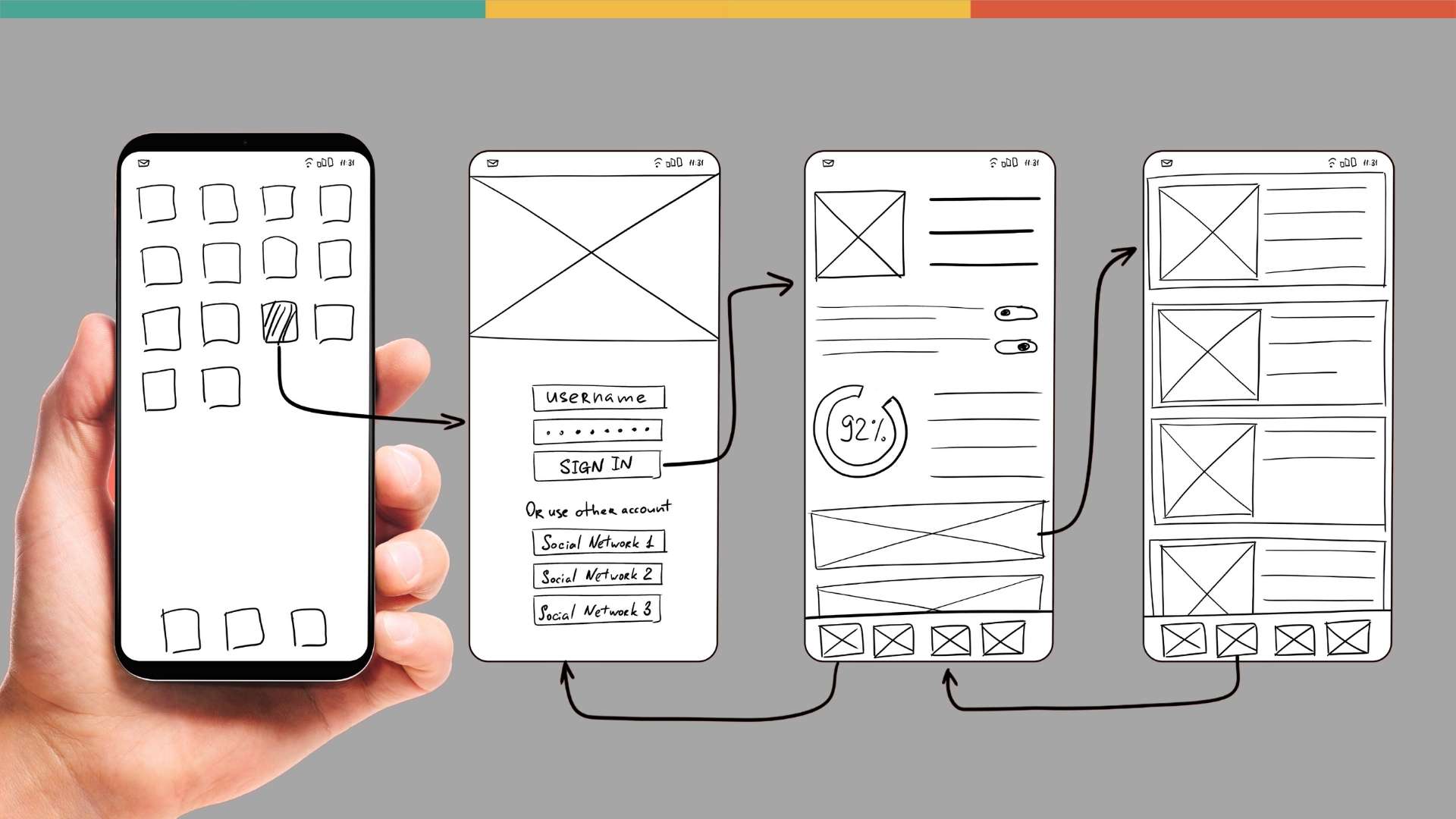
Developing a successful mobile app involves a systematic approach that carefully navigates through various stages of conceptualization, design, and planning. From generating innovative ideas to creating visual representations of app layouts, the process demands creative thinking, user-centric design, and precise execution. In this article, we’ll examine the detailed steps involved in creating a mobile app, including how app designers translate vague ideas into concrete wireframes that serve as the basis for a fluid and simple user interface.
What Are Mobile App Wireframes?
Wireframes for mobile apps are streamlined visual representations of the user interface, design, and navigation flow of an app. They serve as the building blocks of the app design process by providing a sample of how the app will look and function. Wireframes are typically created in black and white and focus more on the design’s structural elements than its aesthetics. By indicating where buttons, menus, content sections, and other UI elements are located, wireframes help designers and stakeholders visualize the layout and user experience of the app. They act as a channel of communication, allowing discussions between designers, developers, and clients to guarantee a complete understanding of the operation of the app. Before moving on to high-fidelity designs and production, mobile app wireframes are crucial for honing concepts, testing user flows, and guaranteeing a seamless and intuitive user experience.
Types of Wireframes
Low-Fidelity Wireframe:
A simplistic, crude illustration of the user interface for a mobile application is called a low-fidelity wireframe. The UI elements are represented by simple shapes and placeholders, and the app’s layout, structure, and navigation are all well-specified. Low-fidelity wireframes are simple to make and perfect for early ideation since they let designers quickly experiment with various ideas. They are very helpful for concept generation, idea validation, and gathering preliminary feedback from stakeholders.
Mid-Fidelity Wireframe:
Mid-fidelity wireframes are more complex and give a clearer depiction of the structure and content of the app than low-fidelity wireframes do. They provide a clearer grasp of the app’s visual hierarchy and user flow since they incorporate extra design components like buttons, icons, and simple text. Simple yet detailed, mid-fidelity wireframes enable designers to fine-tune user interactions and confirm user experience design choices.
High-Fidelity Wireframe:
Of the three types, high-fidelity wireframes are the most in-depth and well-rounded. They contain exact elements, like colors, typography, and realistic content, and closely mirror the visual design of the finished product. The appearance and feel of the app is more accurately portrayed by high-fidelity wireframes, which makes them perfect for showing clients, developers, and other stakeholders.
Also Read: Instasupersave Alternative
What Should a Wireframe Include?
The layout, user interface, and functionality of the app should all be communicated in a wireframe. Although the level of detail can differ based on whether it is a low, mid, or high-fidelity wireframe, the following essential elements should be present:
- Content hierarchy
- Space distribution
- Possible app user actions
- App features
- Transitions between app pages
Top Tools for Mobile App Wireframing
1- Sketch
A popular design program called Sketch makes it simple for designers to produce precise, comprehensive wireframes. Sketch provides a smooth design experience with a user interface that is easy to use and a large library of plugins and tools.
2- Balsamiq
Balsamiq is an intuitive wireframing tool with a focus on speedy prototyping and simplicity. The huge library of pre-built elements and drag-and-drop interface make it simple for designers to quickly produce low-fidelity wireframes.
3- Figma
The cloud-based design and collaboration tool Figma is very well-liked among designers and teams. Its real-time collaborative features enable multiple designers to work simultaneously on wireframes, fostering seamless teamwork and efficient design iterations.
4- Zeplin
Zeplin is a specialized tool that bridges the gap between design and development teams. While not a wireframing tool itself, Zeplin enhances the handoff process by generating style guides, asset exports, and code snippets from design files, streamlining the transition from wireframes to the final development stage.
Steps for Wireframing a Mobile App
1. Ideation Phase
During this stage, designers identify the purpose and goals of the mobile app, understanding what problem it aims to solve and what value it offers to users. Conducting thorough market research helps gain insights into competitors and market trends, providing a solid foundation for the design process. Defining the target audience is essential as it ensures that the app’s design aligns with the preferences and needs of potential users. In the brainstorming phase, designers generate a multitude of app ideas, exploring various possibilities and creative solutions. Afterward, they narrow down the options, carefully selecting the most viable and promising idea for further development. This initial ideation phase sets the groundwork for wireframing, guiding designers to create purposeful, user-centered wireframes that fulfill the app’s objectives and resonate with the target audience.
2. User Research and Analysis
Understanding user needs and preferences is crucial for designing a mobile app that meets their expectations. Conducting user surveys and interviews helps gather valuable feedback, uncovering insights into user behavior and pain points. Analyzing competitor apps and industry trends provides designers with a broader perspective, allowing them to identify best practices and potential areas of improvement. By examining successful apps and their key features, designers can gain inspiration and understand what resonates with users. This user-centric approach ensures that the wireframes address the needs of the target audience while staying ahead of the competition. Through user research and analysis, designers can create wireframes that prioritize user experience and offer innovative features, setting the stage for a successful mobile app.
3. Information Architecture
Information architecture is a crucial aspect of the wireframing process, focusing on organizing content and designing an intuitive navigation structure for the mobile app. Creating a site map lays out the hierarchical structure of the app, depicting how different pages and sections are interconnected. The navigation structure is carefully crafted to ensure that users can easily access the app’s features and content without feeling overwhelmed. Defining user flows and interactions helps designers understand how users will navigate through the app and interact with its various elements. This step ensures a seamless user experience and efficient task completion. Wireframing the user interface brings all these elements together, visualizing the app’s layout, design, and functionality. Information architecture plays a pivotal role in shaping user interactions, content presentation, and overall app usability, setting the foundation for a well-organized and user-friendly mobile app.
4. Visual Design
Building upon the information architecture, designers focus on creating a visually appealing and engaging experience. This involves carefully selecting colors, typography, and graphical elements that align with the app’s branding and target audience. The site map and navigation structure are translated into a visually intuitive interface, ensuring users can easily navigate through the app’s various sections and features. Organizing content and features in a visually cohesive manner enhances readability and user comprehension.
Defining user flows and interactions is vital to ensure that the app offers a seamless and delightful experience for users, with smooth transitions and intuitive interactions. Wireframing the user interface brings all these visual elements together, giving stakeholders a clear view of how the app will look and function. By paying attention to visual design during wireframing, designers lay the groundwork for a visually appealing, user-friendly, and engaging mobile app.
5. Usability Testing
By conducting usability tests with target users, designers can gather valuable feedback and observations on how users interact with the app. During these tests, designers observe users navigating through the wireframes, identifying any usability issues, pain points, or areas of confusion. Collecting this feedback helps in understanding how well the wireframes align with user needs and preferences. Based on the test results, designers iterate and refine the wireframe design, making necessary improvements to enhance usability and user satisfaction. This iterative process allows designers to fine-tune the app’s user experience, leading to a more polished and user-friendly mobile app design.
6. Iterative Design Process
Throughout this process, designers actively seek and welcome feedback from stakeholders, users, and team members. Based on the received feedback, designers iterate on the wireframe design, making necessary adjustments to enhance functionality, usability, and overall user experience. The iterative cycle involves testing and validating these design changes to ensure they meet the desired goals and address identified issues effectively. This iterative loop of feedback, refinement, and testing allows designers to make informed decisions, resulting in a progressive improvement of the app’s wireframes. By revisiting and adjusting the design as needed, the iterative design process helps in creating a well-optimized and user-centric mobile app design that resonates with users and aligns with project objectives.
7. Collaboration and Communication
Effective team collaboration involves clear and continuous communication between designers and the development team. Designers provide design assets and specifications to developers, ensuring a smooth handoff of the wireframes for implementation. Regular communication and collaboration between the two teams enable efficient discussions about design changes, technical feasibility, and potential improvements. This collaborative approach fosters a shared understanding of the project’s vision and ensures that the final app aligns with the original wireframe design.
Conclusion
Mobile app development has become increasingly reliant on wireframes. A good app wireframe is essential for understanding your app and users better. The process also optimizes your design resources and time. This article shared essential tips and instruments for making an application wireframing that will work well for you for quite a while. Wireframing your mobile application can be essentially as basic as outlining the client stream and prototyping it.
- July 27, 2023
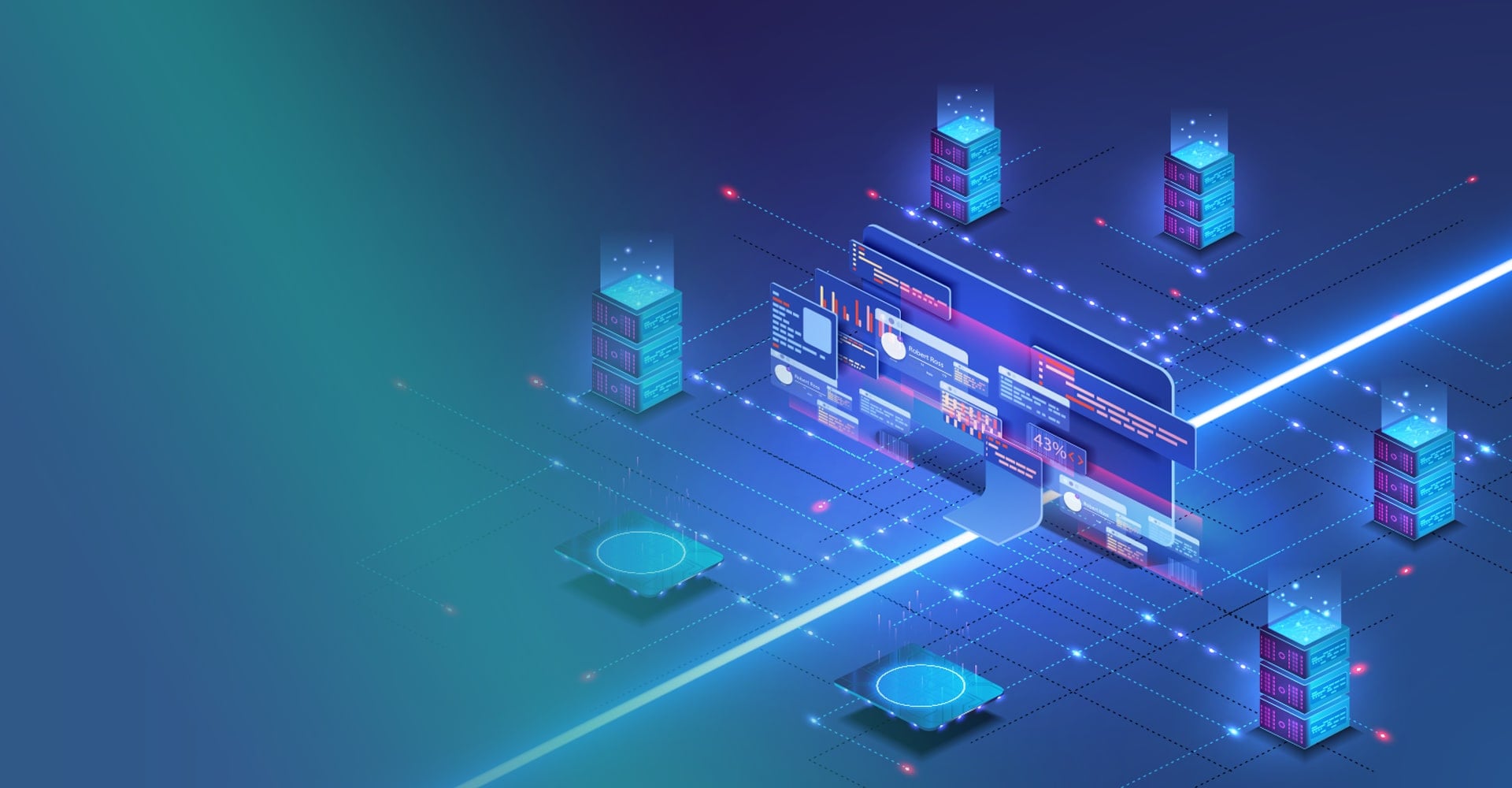
77% of enterprises have at least one application or a portion of it in the cloud.
In the quick-paced world of modern business, one technology marvel—cloud computing—has truly changed the game for companies of all kinds. The days of depending only on on-premises technology are long gone, along with its inherent limitations and astronomical prices. Instead, businesses are more and more using the potential of the cloud to bring in a new era of competition, efficiency, and agility. The cloud has evolved into an essential instrument, transforming the basic structure of contemporary businesses and accelerating digital transformation for everyone from small startups to large firms. This article focuses on the advantages that cloud computing provides, especially in the context of Enterprise Resource Planning (ERP) systems, as it examines the crucial role it plays in transforming enterprise software solutions.
Before diving into it, here’s a few interesting stats and facts about cloud computing:
- 90% of companies use some type of cloud service & 80% of enterprises use Amazon Web Services as their primary cloud platform.
- At least one application, or a portion of it, is hosted on the cloud by 77% of businesses.
- 200 ZB of data will be stored in the cloud by 2025.
- 60% of the world’s corporate data is stored in the cloud as 94% of enterprises use cloud services and 92% of businesses have a multi-cloud strategy in place or in the works.
- Cloud data centers account for 3% of the world’s energy consumption.
- 67% of enterprise infrastructure is now cloud-based.
- The global cloud computing industry has a market size of $480.04 billion, as of 2022.
What is Cloud Computing?
Companies no longer need to invest in and maintain physical infrastructure because cloud computing has made it possible for them to share a set of computer resources. The cloud model primarily offers three service models: infrastructure as a service (IaaS), platform as a service (PaaS), and software as a service (SaaS). IaaS provides internet-based access to virtualized computing resources, whereas PaaS offers a preferred platform for developing, deploying, and maintaining applications. SaaS enables customers to access applications stored in the cloud.
Importance of Enterprise Software Solutions
Large organisations need enterprise apps/software solutions because they offer thorough tools and capabilities to manage a variety of business tasks, including finance, human resources, supply chain, customer relationship management, and more. These programmes encourage productivity, effectiveness, and decision-making skills, all of which are crucial for the expansion and success of a business.
Benefits of Cloud-based Enterprise Software Solutions (With Real-Life Examples)
Cloud computing plays a vital role in enhancing capabilities of enterprise software solutions, both from a technical standpoint and from a business perspective, underscoring their transformative impact on modern organizations. Let’s explore some of these perks in depth.
Flexibility and Agility
Cloud computing provides unparalleled flexibility and agility to businesses, allowing them to adapt quickly to changing needs and market demands. Here are some real-life examples that showcase the significance of flexibility and agility in cloud-based enterprise solutions:
Scalability and Customizability
Cloud-based enterprise software solutions offer unmatched scalability, allowing organizations to easily adjust their computing resources according to changing needs. Whether the business experiences a sudden spike in demand or needs to downscale during quieter periods, the cloud adapts accordingly. Moreover, cloud solutions are highly customizable, enabling organizations to tailor applications to their specific requirements and integrate with existing systems seamlessly.
For example: During the holiday season, an e-commerce retailer experiences a surge in website traffic and sales. To handle this increased demand, the retailer needs additional computing resources. The company can instantly scale up its infrastructure with cloud computing to handle traffic spikes, giving customers a seamless shopping experience. Because of its flexibility to scale, it is a cost-effective solution that not only improves performance but also eliminates the need to spend extra money on infrastructure during non-peak times. Additionally, cloud-based solutions enable for customization, enabling retailers to specifically design applications to their needs and seamlessly connect them with current systems.
Remote Operations Management
Cloud computing enables remote access to enterprise software applications and data from any location with an internet connection. This level of flexibility facilitates remote operations management, enabling employees to collaborate effectively and access critical information while working from home, during business trips, or from satellite offices. The pandemic-induced remote work trend further underscored the value of cloud-based solutions in maintaining business continuity.
For example: A global consulting firm with teams scattered worldwide needs to collaborate efficiently and access critical data securely. Cloud computing enables remote access to centralized systems and data, fostering seamless collaboration among consultants, regardless of their location. This enhanced mobility and real-time information access drive productivity and responsiveness, especially during client engagements or business trips. Additionally, cloud-based solutions do away with the requirement for several physical offices, lowering overhead expenses and boosting the company’s competitive advantage through more effective resource allocation.
Cost-effectiveness
Compared to conventional on-premises installations, cloud-based solutions provide a huge cost benefit. Let’s look at several instances from everyday life that show how cost-effective cloud computing is:
Reduced Upfront Costs
The typical upfront expenditures for hardware, software licences, and other relevant expenses when implementing traditional on-premises software solutions are high. But with cloud-based solutions, there is no requirement for substantial upfront commitments because of the pay-as-you-go model. Organizations can scale their usage and expenses as needed, making cloud solutions particularly appealing to businesses of all sizes.
For example: For a tech startup with limited capital, adopting cloud computing eliminates the need for substantial upfront investments in physical servers and software licenses. The startup may concentrate on product development and marketing while increasing resources as the user base expands by hosting their application on a cloud platform. With the help of this pay-as-you-go strategy, companies are able to deploy cash intelligently and maintain financial stability during the crucial early phases of their businesses. It also offers cost predictability.
Lower Maintenance and Support Costs
On-site infrastructure maintenance can be costly and requires a specialized IT team as well as frequent hardware and software updates. The service provider is in charge of infrastructure management for cloud-based enterprise software solutions. By doing this, businesses can always obtain the most recent software upgrades and security patches without having to pay extra fees, which lessens the workload on internal IT workers.
For example: By switching to cloud-based solutions, a medium-sized business can considerably lower its IT maintenance and support expenditures. The requirement for a sizable internal IT workforce is reduced when infrastructure management is handled by cloud providers. The software is also routinely updated and maintained by cloud service providers, guaranteeing that the company always has access to the most recent and secure versions of its programs. Cost savings are generated as a result, which can then be spent in core business operations to promote development and innovation.
Enhanced Security
Cloud computing provides robust security measures to protect sensitive business data and applications. Here are some real-life examples illustrating how cloud-based solutions enhance security:
Cloud service providers prioritize security and invest heavily in safeguarding their platforms. To guard against potential threats, they use strong security measures including firewalls, multi-factor authentication, and encryption. Business owners can improve their security posture and lower the danger of data breaches by depending on these specialized services.
For example: A healthcare practitioner is required to safeguard sensitive patient data and adhere to stringent data privacy laws. Utilizing cloud-based services gives the provider access to strong security features, such encryption and multi-factor authentication, which guarantees that patient data is kept secure and is only available to authorized people. Furthermore, the cloud provider’s adherence to security certifications and audits instills confidence in the healthcare provider’s stakeholders, maintaining trust and reputation.
Protection of Sensitive Business Data
Cloud-based enterprise software solutions often provide advanced data backup and disaster recovery mechanisms. In order to guarantee business continuity even in the event of hardware failures or natural disasters, data is redundantly stored across numerous data centers. Sensitive corporate data is always kept safe, available, and recoverable thanks to this level of security.
For example: A financial institution handles a lot of private financial information. By implementing a cloud-based disaster recovery solution, the institution can securely replicate critical data and applications to geographically dispersed data centers. In case of physical disasters or hardware failures, the cloud-based solution ensures business continuity and minimizes downtime, safeguarding the institution’s reputation and building trust with customers and stakeholders.
Improved Collaboration
Cloud-based enterprise solutions enable real-time collaboration among teams, regardless of their physical locations. Here are some real-life examples highlighting the impact of improved collaboration:
Real-time Collaboration Capabilities
Cloud-based enterprise software solutions facilitate real-time collaboration among employees, regardless of their physical locations. Team members can work together on documents, projects, and tasks simultaneously, enhancing overall productivity and efficiency. The seamless sharing of information fosters a collaborative work environment, accelerating decision-making processes.
For example: A global manufacturing company with teams across continents requires effective collaboration for product development and process optimization. Cloud-based collaboration tools enable real-time access to shared documents, centralized project management, and video conferencing, fostering seamless communication and reducing delays caused by time zone differences. This enhanced collaboration results in increased productivity and innovation, strengthening the company’s position in the competitive manufacturing industry.
Secure Information Sharing
Cloud-based solutions prioritize data privacy and enable organizations to share information securely both internally and externally. Administrators can set access controls, ensuring that only authorized personnel can view sensitive data. Secure data sharing is particularly vital for businesses that collaborate with external partners, clients, or suppliers.
For example: A professional services firm handles confidential projects and requires a secure platform for sharing sensitive information with clients and partners. Cloud-based secure file-sharing solutions offer end-to-end encryption and access controls, ensuring that only authorized individuals can access sensitive project files. This level of security builds trust with clients, attracting more business opportunities and enhancing the firm’s reputation for data confidentiality and security.
Leveraging Cloud Computing for Enterprise Resource Planning (ERP)
Due to its many advantages over conventional on-premises ERP implementations, cloud-based ERP solutions have grown in popularity in recent years. With the help of these solutions, organizations may access vital data instantly and without being constrained by physical infrastructure because all ERP apps and data are hosted on the cloud.
Advantages of Cloud-based ERP
There are several ways in which cloud computing helps ERP solutions, the main are discussed below:
Accessibility and Anytime, Anywhere Data
Cloud-based ERP solutions provide employees with the flexibility to access vital business data and applications from any location with internet connectivity. This accessibility enhances decision-making processes, as stakeholders can view real-time information and respond to business challenges promptly.
Real-time Data Insights
Cloud-based ERP systems capture and process data in real-time, enabling organizations to make data-driven decisions instantly. This immediate access to critical business insights allows for better forecasting, resource planning, and identifying new opportunities for growth.
Efficient Business Process Optimization
Analytics and automation features are frequently included in cloud-based ERP packages. With the help of these features, firms may streamline and improve their operations, cutting out human labor and inefficiencies. Organizations are able to attain greater levels of productivity and operational excellence as a result.
The Transformational Power of Cloud Computing in Enterprises
Cloud computing has the ability to transform enterprise operations in the digital realm and propelling businesses toward unprecedented heights of success and innovation.
Digital Transformation and Cloud ERP
In an organization’s journey towards digital transformation, cloud ERP is crucial. Businesses may modernize their IT infrastructure, increase operational effectiveness, and foster creativity by implementing cloud-based solutions.
Cloud ERP makes it easier to incorporate cutting-edge technology into numerous business operations, such as artificial intelligence and machine learning, further boosting competitiveness.
Impact on Efficiency, Productivity, and Competitiveness
Efficiency, productivity, and competitiveness are all significantly impacted by the use of cloud computing in enterprise software solutions. Organizations can increase production levels through streamlined processes, decreased downtime, and the capacity to quickly respond to shifting business needs. Additionally, the affordability of cloud solutions enables businesses to spend more on innovation while still competing in their respective marketplaces.
Conclusion
Businesses are changing as a result of the integration of cloud computing with enterprise software solutions, particularly in the area of ERP systems. The advantages of cloud-based solutions, such as their adaptability, affordability, higher level of security, and improved collaboration capabilities, make them essential in the evolving business environment of today. The usage of cloud-based ERP solutions is anticipated to increase steadily as digital transformation continues to influence how businesses will operate in the future. This will help businesses remain adaptable, efficient, and competitive in a world where markets are always changing.

